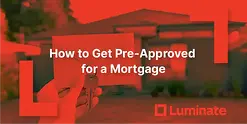5 Lessons First-Time NZ Home Buyers Wish They Knew
 By
Trent Bradley
·
18 minute read
By
Trent Bradley
·
18 minute read

Buying your first home in New Zealand should be one of life's great milestones. A moment filled with excitement, pride, and a sense of achievement. But for many first-home buyers, the experience can also feel overwhelming, rushed, and full of unpleasant surprises.
Table of Contents
- The Gap Between Expectation and Reality
- Lesson 1: Pre-Approval Is Just the Beginning, Not a Final Green Light
- Lesson 2: The Deposit Isn't the Only Cost You Need to Plan For
- Lesson 3: Some Properties Are Much Harder to Finance Than Others
- Lesson 4: You Don't Have to Use Your Everyday Bank
- Lesson 5: How You Structure Your Loan Can Make or Break Your Financial Progress
- Frequently Asked Questions
- Final Thoughts: Knowledge Is Your Greatest Asset
Key Takeaways
- Pre-approval isn't a guarantee—it's conditional on your circumstances staying the same, the property meeting lender criteria, satisfactory valuation, and stable bank policies. Always verify before making offers.
- Beyond your deposit, budget an additional $10,000-$20,000 for legal fees, inspections, insurance, moving costs, and immediate repairs—plus maintain a $10,000-$20,000 emergency fund.
- Property type matters enormously—apartments under 50sqm, leasehold titles, cross-lease properties, and homes in poor condition often require 20-30% deposits or face outright decline from lenders.
- Your everyday bank is rarely your best option—mortgage advisers access 15-25+ lenders, negotiate better rates (often 0.10-0.25% lower), and can save you $6,000+ over 5 years at no cost to you.
- Loan structure impacts your wealth as much as approval—splitting your loan 70-80% fixed and 20-30% floating, choosing a 30-year term with 25-year payments, and using offset accounts can save over $100,000 in interest.
- Job changes, new debts, or property valuation shortfalls can void your pre-approval instantly—maintain financial stability from pre-approval through settlement to avoid losing your deposit.
- Working with an experienced mortgage adviser isn't just helpful, it's strategic—they prevent costly mistakes, match you to the right lenders, structure loans optimally, and provide ongoing support as your needs evolve.
At Luminate Financial Group, we've helped hundreds of Kiwis take their first step onto the property ladder, and one thing we hear time and again is: "I wish someone had told me this earlier."
So we've taken the most important lessons—things we wish we'd known ourselves before buying—and turned them into this comprehensive guide. If you're just beginning your journey, these five insights could save you thousands of dollars, months of time, and significant stress.
These aren't just generic tips. These are real lessons from real first-home buyers who learned them the hard way, so you don't have to.
The Gap Between Expectation and Reality
The dream of homeownership is powerful. You imagine finding the perfect property, making an offer, getting approved, and moving into your own place. Simple, right?
The reality is often quite different. Many first-time buyers discover:
- Pre-approval doesn't guarantee final approval
- The deposit is just the beginning of the costs
- Not all properties are equally easy to finance
- Their everyday bank might not be their best option
- Loan structure matters as much as getting approved
Understanding these realities before you start house hunting gives you a significant advantage. Let's explore each lesson in detail.
Lesson 1: Pre-Approval Is Just the Beginning, Not a Final Green Light
The misconception: "I've got pre-approval, so I'm definitely getting the loan."
The reality: Pre-approval is conditional and can change based on your circumstances or the specific property you choose.
What Pre-Approval Actually Means
Pre-approval (also called approval in principle or AIP) is a bank's indication that they would likely lend you a certain amount based on your current financial situation. It's not a guarantee.
Pre-approval is conditional on:
| Condition | What It Means | Why It Matters |
|---|---|---|
| No change in circumstances | Your employment, income, and debts remain the same | Job change or new debt can void approval |
| Property meets criteria | The specific property is acceptable to the lender | Not all properties are equally financeable |
| Satisfactory valuation | Bank's valuation matches or exceeds purchase price | Low valuation can kill the deal |
| No credit issues | Your credit file remains clean | New defaults or credit applications problematic |
| Updated assessment | Bank's policies and criteria haven't changed | Lending rules can tighten without warning |
Real-World Scenarios Where Pre-Approval Falls Apart
Scenario 1: The property doesn't meet lending criteria
- You're pre-approved for $650,000
- You find a perfect apartment for $620,000
- Bank declines because it's only 38sqm (under their 40sqm minimum)
- You've wasted time, may lose deposit, and must start searching again
Scenario 2: You changed jobs between pre-approval and offer
- Pre-approved based on permanent employment
- Started new job (even if higher paying)
- Bank now requires 3-6 months at new employer
- Can't proceed with purchase
Scenario 3: Bank valuation comes in low
- Offer accepted at $700,000
- Bank values property at $660,000
- Will only lend on $660,000
- Need extra $40,000 deposit or must renegotiate/withdraw
Scenario 4: You took on new debt
- Pre-approved for maximum borrowing
- Bought new car on finance before settlement
- Borrowing capacity reduced by $70,000
- Can't complete purchase
Scenario 5: Bank tightened lending criteria
- Pre-approved 2 months ago
- Reserve Bank announces new lending restrictions
- Bank reduces lending or requires larger deposit
- Your approval no longer valid
How to Protect Yourself
Before making any offers:
- ✓ Confirm your pre-approval is still current (under 3-6 months old)
- ✓ Have your mortgage adviser review the specific property
- ✓ Check the property type is acceptable to your lender
- ✓ Don't take on any new debt
- ✓ Don't change jobs if possible
- ✓ Maintain the same financial position
When making offers:
- ✓ Include finance condition in all offers (except auctions)
- ✓ Have your adviser contact the bank for verbal confirmation
- ✓ Budget for valuation to come in 5-10% lower than offer
- ✓ Don't go unconditional until formal approval issued
At Luminate, we review every property before you make an offer. We check:
- Will the property meet our lender panel's criteria?
- Are there any red flags (size, location, title type, condition)?
- Is the price realistic for bank valuations in that area?
- Should we approach a specific lender for this property type?
This proactive approach prevents disappointment and protects your deposit.
Questions to Ask Your Adviser Before Making an Offer
- Is this property type acceptable to the lender who pre-approved me?
- Are there any size, age, or location restrictions I should know about?
- How do bank valuations typically compare to sale prices in this area?
- Should I get a private valuation before making an offer?
- If the bank valuation is low, what are my options?
Lesson 2: The Deposit Isn't the Only Cost You Need to Plan For
The misconception: "Once I have the deposit saved, I can buy a house."
The reality: The deposit is just one part of a much larger cost picture that catches many first-home buyers off guard.
The Complete Cost Breakdown: Beyond the Deposit
Most first-home buyers focus exclusively on saving their deposit (typically 10-20% of the purchase price). But the additional costs can easily add $10,000-$20,000 or more to what you actually need.
Complete first-home purchase budget:
| Cost Category | Item | Typical Cost | When Payable |
|---|---|---|---|
| Deposit | 10-20% of purchase price | $60,000-$120,000 on $600k property | At offer/settlement |
| Legal/Conveyancing | Solicitor fees | $1,500-$3,000 | At settlement |
| Pre-Purchase | Building inspection | $500-$1,200 | Before going unconditional |
| Pre-Purchase | LIM report | $200-$400 | Before going unconditional |
| Finance | Property valuation | $0-$800 (often bank pays) | During approval |
| Finance | Loan application fees | $0-$500 (varies by lender) | At settlement |
| Insurance | First year home insurance | $800-$2,500 | Before settlement |
| Insurance | Contents insurance | $200-$600 | Before/at settlement |
| Moving | Removalist or truck hire | $500-$2,500 | Settlement week |
| Immediate | Minor repairs/cleaning | $500-$2,000 | First month |
| Setup | Utilities connection/setup | $100-$300 | First month |
| Furniture | Essential items if needed | $2,000-$10,000+ | First few months |
| Ongoing | First rates bill | $600-$1,000 (quarterly) | Within 3 months |
Example total costs for $600,000 property:
- 10% Deposit: $60,000
- Additional upfront costs: $6,000-$12,000
- Total needed: $66,000-$72,000
Hidden Costs That Surprise First-Home Buyers
Costs people consistently forget:
1. Chattels and appliances
- Curtains, blinds, and light fittings may not be included
- Appliances might be old and need immediate replacement
- Heat pump, dishwasher, or rangehood might be missing
- Budget: $2,000-$8,000
2. Immediate repairs identified in building report
- Gutters need replacing
- Minor weathertightness repairs
- Deck requires maintenance
- Budget: $1,000-$10,000+
3. Section and garden maintenance
- Lawnmower, gardening tools, outdoor furniture
- Tree trimming or removal
- Fence repairs
- Budget: $500-$3,000
4. Body corporate fees (apartments/units)
- Quarterly levies: $1,000-$5,000+ per year
- Special levies for major work: Can be $5,000-$50,000+
- Often forgotten by first-time buyers
5. Rate of change surprises
- Council rates higher than expected
- Insurance more expensive than initial quote
- Utilities costs for whole house vs. apartment
- Maintenance costs higher than renting
Creating Your Complete Budget
Step-by-step budget planning:
1. Calculate purchase costs (3-4 months before buying):
- Deposit (10-20%)
- Legal fees
- Building inspection and LIM
- Insurance first year
- Moving costs
- Total: Deposit + $5,000-$15,000
2. Plan for settlement surprise costs (+$2,000-5,000):
- Unexpected repairs
- Missing chattels
- Immediate purchases needed
- Initial rates/utilities
3. Budget for first3 months ownership (+$3,000-8,000):
- Furniture and essentials
- Minor improvements
- Garden setup
- Settling-in costs
4. Establish emergency fund (ongoing):
- 3-6 months mortgage payments
- Covers unexpected repairs
- Job loss buffer
- Aim for $10,000-$20,000
Total realistic savings target: Deposit + $20,000-$30,000 buffer for comfortable purchase
How Luminate Helps With Budget Planning
We provide:
- Complete cost breakdown specific to your target property price
- Realistic budget worksheet covering all expenses
- Guidance on which costs are negotiable or waivable
- Strategies to minimize upfront costs where possible
- Connection to trusted conveyancers, insurers, and inspectors
We've seen too many buyers:
- Get to settlement and realize they're short on funds
- Spend their entire savings leaving no emergency buffer
- Have to borrow from family for unexpected costs
- Experience financial stress in their first months of ownership
Proper planning prevents these situations.
Lesson 3: Some Properties Are Much Harder to Finance Than Others
The misconception: "If I'm pre-approved for $X, I can buy any property up to that amount."
The reality: Banks have strict criteria about property types, and some homes are surprisingly difficult or impossible to finance.
Understanding Property Lending Risk
From a bank's perspective, the property is their security. If you default, they need to sell it quickly to recover their money. Properties that are harder to sell, harder to value, or have higher risk profiles face stricter lending criteria.
How banks categorize property risk:
| Risk Level | Property Characteristics | Lending Impact |
|---|---|---|
| Low Risk | Standalone house, freehold title, good location, 80sqm+, standard construction | Best rates, 10% deposit accepted |
| Medium Risk | Townhouse, unit title, 50-80sqm, minor issues | May require 15% deposit |
| Higher Risk | Apartment under 50sqm, cross-lease, poor condition | May require 20%+ deposit |
| High Risk | Leasehold, relocated house, significant defects | May require 30%+ or decline |
| Unacceptable Risk | Apartment under 40sqm, failed weathertightness, major structural | Often declined entirely |
Properties That Are Difficult to Finance
1. Small apartments (under 50 square meters)
Why banks don't like them:
- Harder to resell
- Limited buyer pool
- Lower valuations
- May not attract families
- Body corporate risks
Lending implications:
- Many banks won't lend under 40sqm at all
- 40-50sqm requires 20%+ deposit typically
- Higher interest rates may apply
- Some banks have blanket policies against small apartments
What to do:
- Check size before making offer
- Ask adviser which lenders accept small apartments
- Budget for larger deposit
- Consider if resale will be difficult
2. Leasehold properties
What leasehold means:
- You own the building, lease the land
- Ground rent paid to landowner
- Lease has expiry date (often 21-99 years)
- Lease renewal not guaranteed
Why banks are cautious:
- Lease could expire
- Ground rent can increase significantly
- Harder to sell as lease shortens
- Value decreases as expiry approaches
Lending implications:
- Most banks won't lend if less than 15-20 years remaining
- Require larger deposits (20-30%)
- More expensive interest rates
- May require lease renewal confirmed before approval
3. Cross-lease titles
What cross-lease means:
- You own share of land with others
- Each owner has exclusive use of their dwelling
- Requires unanimous agreement for changes
- Complex ownership structure
Why banks are cautious:
- Requires consent from all parties for alterations
- Disputes can affect value
- More complex to sell
- Legal complications
Lending implications:
- Some banks avoid cross-lease entirely
- May require 15-20% deposit
- Requires clean title with no disputes
- Any planned alterations need all owners' consent
4. Properties in poor condition
Red flags for lenders:
- Major weathertightness issues
- Structural damage or movement
- Extensive rot or decay
- Failed building reports
- Unconsented major work
- Monolithic cladding (1992-2004) without weathertightness certificate
Lending implications:
- May decline outright
- Require repairs before approval
- Need larger deposit to cover risk
- Higher interest rates
- May require specialist lender
5. Relocated or transported houses
Why banks are cautious:
- No building history at current site
- Transport damage possible
- Foundation and reconnection quality unknown
- Harder to value and sell
Lending implications:
- Require full engineering and building reports
- Need code compliance for reconnection
- Often require 20%+ deposit
- Some banks won't lend at all
6. Properties in undesirable locations
Locations banks avoid or restrict:
- Flight paths (excessive noise)
- Immediately adjacent to motorways
- Industrial areas
- Flood-prone zones without mitigation
- Earthquake-prone buildings
- Areas with declining values
Lending implications:
- May decline or require larger deposit
- Lower valuations
- Higher interest rates
- Restricted loan-to-value ratios
How to Avoid Property Finance Problems
Before viewing properties:
- Understand which property types your lender accepts
- Know the minimum sizes and title types acceptable
- Research typical valuations in target areas
- Set realistic expectations about what you can buy
When you find a property you like:
- Check the basics immediately:
- Square meters (for apartments/units)
- Title type (freehold, leasehold, cross-lease)
- Age and construction type
- Any obvious condition issues
- Share listing with your mortgage adviser:
- We review property details
- Flag any potential lending issues
- Advise if it's financeable with your current approval
- Suggest alternative lenders if needed
- Order building and LIM reports before offering:
- Identify major issues early
- Understand true condition
- Know if repairs affect lending
- Make offer conditional on finance:
- Protects you if property doesn't meet criteria
- Allows withdrawal without penalty
- Time to explore alternative lenders
At Luminate, we maintain relationships with 15-25+ lenders including mainstream banks and specialist lenders. If your main bank won't approve a property, we often know alternative lenders who will. Different lenders have different risk appetites.
Lesson 4: You Don't Have to Use Your Everyday Bank
The misconception: "I should just get my mortgage from my everyday bank—they already know me."
The reality: Your everyday bank might be the worst choice for your mortgage, and going direct limits your options and negotiating power.
Why First-Home Buyers Default to Their Own Bank
Common reasons (and why they're flawed):
| Reason | The Reality |
|---|---|
| "It's convenient" | Convenience costs you thousands in higher rates |
| "They know me already" | Knowing you doesn't mean better rates or approval |
| "I'm loyal to them" | Banks aren't loyal to you—they're profit-driven |
| "Dealing with one bank is easier" | Mortgage advisers handle multiple banks for you |
| "They'll give me a better deal" | Existing customers often get worse rates than new customers |
| "I don't know other banks" | That's what mortgage advisers are for |
The Problems With Using Only Your Own Bank
1. Limited product options
- Only see one bank's products
- Miss better rates at other banks
- Can't compare features and flexibility
- Stuck with their lending policies
2. No negotiating power
- Banks know you're not shopping around
- No incentive to offer best rates
- Take-it-or-leave-it approach
- Miss cashback offers and incentives
3. Stricter lending for existing customers
- Some banks are tougher on people they know
- See all your spending history and judge it
- May have pre-conceived ideas about your financial management
- Fresh eyes at new bank can help
4. One lender's criteria might not suit you
- Some banks are tough on self-employed
- Others don't like small deposits
- Some have strict property criteria
- Your bank might not be right for your situation
5. Missing out on competitive advantages
- Cashback offers ($2,000-5,000 common)
- Rate specials for new customers
- Promotional offers
- Better features (offset accounts, flexibility)
How Different Banks Treat Different Situations
Lender comparison examples:
| Your Situation | Bank A | Bank B | Bank C |
|---|---|---|---|
| Self-employed 18 months | Decline | Decline | Approve with 20% deposit |
| 10% deposit, excellent income | Approve with LEP | Decline | Approve with reduced LEP |
| Recent job change (2 months) | Decline (need 6 months) | Approve (accept 3 months) | Decline (need 12 months) |
| Small apartment 45sqm | Decline | Approve with 20% deposit | Approve with 15% deposit |
| Student loan $40k | Reduces capacity significantly | Moderate impact | Minimal impact |
This is why having options matters.
The Advantages of Using a Mortgage Adviser
What advisers provide:
1. Access to 15-25+ lenders
- All major banks (ANZ, ASB, BNZ, Westpac, Kiwibank)
- Second-tier banks (TSB, SBS, Co-operative Bank)
- Non-bank lenders (Pepper Money, Liberty, Resimac)
- Specialist lenders for unique situations
2. Lender matching
- Know which banks suit which situations
- Match you to lenders likely to approve
- Avoid wasting time on unsuitable banks
- Increase approval chances significantly
3. Rate negotiation
- Banks compete for adviser business
- Advisers placing high volumes get better rates
- Can negotiate 0.10-0.25% better than advertised
- Access special offers not available to public
4. Product comparison
- Compare rates, fees, features across all lenders
- Identify best overall package, not just lowest rate
- Consider flexibility, offset accounts, split loans
- Find loan structure that suits your goals
5. Time savings
- One application, multiple lenders
- Adviser handles all bank communication
- Don't repeat yourself to multiple banks
- Faster approvals through direct bank relationships
6. Ongoing support
- Annual reviews to ensure still on best rate
- Refinancing advice when beneficial
- Help with renovations, investment properties
- Long-term relationship and advocacy
7. No cost to you
- Paid by lenders via commission (0.60-0.85% of loan)
- No fees to borrower in most cases
- Bank pays whether you go direct or through adviser
- You get expert service at no additional cost
Real-World Comparison: Direct vs. Adviser
Example scenario: $600,000 loan, 30-year term
| Approach | Interest Rate | Cashback | Annual Cost | 5-Year Cost | Notes |
|---|---|---|---|---|---|
| Your bank (direct) | 6.85% | $0 | $46,230 | $231,150 | Standard rate, no negotiation |
| Through adviser (negotiated) | 6.60% | $3,000 | $45,000 | $225,000 | Negotiated rate + cashback |
| Savings with adviser | -0.25% | +$3,000 | -$1,230/year | -$6,150 | Better by $6,150+ over 5 years |
Plus ongoing benefits:
- Annual reviews ensure you stay competitive
- Refinancing guidance when rates drop
- Support for life changes (renovations, investment, etc.)
Questions to Ask When Choosing Adviser vs. Direct
Ask yourself:
- Do I have time to approach and compare 5+ banks myself?
- Do I know which banks are best for my specific situation?
- Can I negotiate rates as effectively as a high-volume broker?
- Do I understand all the product features and trade-offs?
- Will I remember to review my rate annually and refinance when beneficial?
For most first-home buyers, the answer to these questions is "no"—which is exactly why mortgage advisers exist.
Lesson 5: How You Structure Your Loan Can Make or Break Your Financial Progress
The misconception: "As long as I get approved, the details don't really matter."
The reality: Your loan structure affects how much interest you'll pay, how fast you can repay, and how flexible you are for life changes. Get it wrong, and you could waste tens of thousands of dollars.
Why Loan Structure Matters
Most first-home buyers focus entirely on:
- Getting approved
- The interest rate
- The monthly payment amount
These matter, but equally important is:
- Fixed vs. floating split
- Loan term length
- Offset account setup
- Split loan structure
- Repayment flexibility
Example impact of structure:
Scenario: $500,000 loan, 6.5% average rate
| Structure Choice | Total Interest Paid (25 years) | Savings |
|---|---|---|
| 30-year term, all fixed, no flexibility | $488,000 | Baseline |
| 25-year term, pay extra $200/month | $386,000 | Save $102,000 |
| Split loan with offset account, optimized | $348,000 | Save $140,000 |
The structure you choose could save or cost you $100,000+ over the life of your loan.
Key Loan Structure Decisions
1. Fixed vs. Floating Interest Rates
Fixed rate loans:
- Interest rate locked for chosen period (6 months to 5 years)
- Repayments stay same regardless of rate changes
- Certainty and budgeting ease
- Usually limited extra payments ($10,000-30,000/year max)
- Break fees if you need to make changes
Floating rate loans:
- Interest rate varies with market
- Repayments change when rates change
- No break fees
- Unlimited extra payments and withdrawals
- Full flexibility
The smart approach: Split your loan
| Portion | Fixed (1-3 years) | Floating |
|---|---|---|
| Purpose | Certainty and protection | Flexibility and extra payments |
| Typical split | 70-80% | 20-30% |
| Strategy | Budget around fixed payment | Put bonuses and extra income here |
Example $600,000 loan split:
- $450,000 fixed at 6.79% for 2 years = $3,098/month
- $150,000 floating at 8.64% = $1,224/month
- Total = $4,322/month
- Can make unlimited extra payments to floating portion
- Fixed portion provides certainty
2. Loan Term: 25 Years vs. 30 Years
30-year term:
- Lower minimum monthly payment
- More manageable if money is tight
- Pay more interest overall
- Takes longer to build equity
25-year term:
- Higher minimum monthly payment
- Pay less interest overall
- Build equity faster
- Less flexibility if income drops
The smart approach: Choose 30 years, pay like 25 years
- Set up 30-year term for flexibility
- Make voluntary payments to match 25-year schedule
- If life changes (job loss, baby, etc.), drop back to 30-year minimum
- Best of both worlds: flexibility + faster repayment
Example: $500,000 loan at 6.5%
- 30-year minimum: $3,160/month
- Pay $3,690/month (25-year pace)
- Save $112,000 interest over life of loan
- Can drop to $3,160 if needed without refinancing
3. Offset Accounts and Revolving Credit
Offset account:
- Savings account linked to mortgage
- Balance offsets interest calculations
- Pay interest only on (Mortgage - Offset Balance)
- Full access to savings anytime
Example:
- Mortgage: $500,000
- Offset account: $30,000
- Interest charged on: $470,000
- Save ~$1,950/year in interest at 6.5%
Revolving credit facility:
- Like a giant overdraft against your mortgage
- Income goes in, expenses come out
- Interest calculated daily on balance
- Maximum flexibility
- Requires discipline to manage
Best for: People with variable income, self-employed, those receiving bonuses
4. Split Loan Structures for Different Goals
Why split into multiple portions:
- Different fixed terms for different purposes
- Hedge against interest rate movements
- Separate savings goals
- Tax efficiency for investment properties later
Example 3-way split for $600,000:
| Portion | Amount | Structure | Purpose |
|---|---|---|---|
| Portion 1 | $300,000 | Fixed 1 year | Short-term certainty, refinance soon |
| Portion 2 | $200,000 | Fixed 3 years | Medium-term stability |
| Portion 3 | $100,000 | Floating/Offset | Flexibility and extra payments |
Benefits:
- Not all fixed rates expire at once (no shock when refinancing)
- Can make extra payments to floating portion
- Flexibility to adjust over time
- Optimize for changing circumstances
Questions Your Adviser Should Ask About Loan Structure
At Luminate, we ask:
- Income stability: Do you have reliable income or is it variable?
- Extra repayment capacity: Can you afford to pay more than minimum?
- Life plans: Planning kids, career change, or major expenses soon?
- Risk tolerance: Do you need payment certainty or can you handle fluctuation?
- Future goals: Might you want investment property or renovations later?
- Savings behavior: Are you disciplined with offset accounts?
Based on your answers, we design a structure that:
- Minimizes interest paid over life of loan
- Provides appropriate flexibility for your situation
- Aligns with your financial goals and risk tolerance
- Adapts to life changes without costly restructuring
Common Loan Structure Mistakes
Mistake 1: Fixing entire loan for 5 years
- No flexibility for extra payments
- Huge break fees if circumstances change
- Miss out on rate drops
Mistake 2: Choosing floating only to "save on break fees"
- Pay higher floating rates continuously
- No protection if rates rise significantly
- Cost more than fixed in most scenarios
Mistake 3: Maximum 30-year term with minimum payments
- Pay $150,000-200,000 extra interest
- Still paying mortgage in retirement
- Slow equity growth
Mistake 4: No offset account when you have savings
- Savings earning 4% while paying 6.5% on mortgage
- Miss 2.5% net benefit
- Could save thousands annually
Mistake 5: Not reviewing structure annually
- Rates change, life changes, goals change
- Old structure may no longer suit
- Miss refinancing opportunities
How Structure Decisions Play Out Over Time
Case Study: Two borrowers, same loan, different structures
Borrower A: Basic structure
- $500,000 loan, 30 years
- All fixed at 6.5% for 2 years, then floats
- Minimum payments only
- No offset account
- Never reviews or optimizes
Result after 10 years:
- Paid $393,000 in repayments
- Principal reduced to $409,000
- Paid $132,000 interest
- Still owe 82% of original loan
Borrower B: Optimized structure
- $500,000 loan, 30-year term
- 70% fixed 2 years, 30% floating
- Pays extra $200/month to floating
- Uses offset account for $20,000 savings
- Annual reviews and refinancing
Result after 10 years:
- Paid $417,000 in repayments (+ $24,000 extra payments)
- Principal reduced to $361,000
- Paid $119,000 interest (saved $13,000)
- Owe only 72% of original loan
10-year difference: $48,000 less owed, $13,000 less interest paid, and on track to be mortgage-free 7 years earlier.
Frequently Asked Questions
Is pre-approval the same as final loan approval?
No. Pre-approval is conditional on your circumstances remaining the same, the property meeting lender criteria, satisfactory valuation, no credit issues, and no changes to bank policies. The specific property you choose can affect whether final approval is granted.
How much money do I really need beyond the deposit?
Beyond your deposit, budget for an additional $10,000-$20,000 to cover legal fees ($1,500-3,000), building inspection ($500-1,200), LIM report ($200-400), insurance ($1,000-3,000), moving costs ($500-2,500), and immediate repairs or purchases. Plus maintain an emergency fund of $10,000-20,000.
What types of properties are hard to get mortgages for?
Properties that are difficult to finance include apartments under 50 square meters, leasehold properties, cross-lease titles, properties in poor condition, relocated houses, and properties in undesirable locations. These often require larger deposits (20-30%) or may be declined entirely by some banks.
Should I get my mortgage from my everyday bank?
Not necessarily. Your everyday bank might not offer the best rates or terms for your situation. Mortgage advisers have access to 15-25+ lenders and can negotiate better rates, compare products, and match you to lenders most likely to approve your specific situation—at no cost to you.
Why does loan structure matter?
Loan structure affects how much interest you pay over the life of your loan, how quickly you can repay, and your financial flexibility. Choosing between fixed and floating, loan terms, offset accounts, and split structures can save or cost you $100,000+ over 25 years.
What happens if the property I want doesn't meet my lender's criteria?
If your preferred lender won't approve a specific property, a mortgage adviser can approach alternative lenders with different criteria. Different banks have different risk appetites and some specialize in property types others avoid. Having access to multiple lenders significantly increases approval chances.
Is it better to fix or float my home loan interest rate?
Most financial advisers recommend splitting your loan 70-80% fixed for certainty and 20-30% floating for flexibility. This provides payment certainty while allowing unlimited extra payments to the floating portion, giving you the best of both worlds.
Should I choose a 25-year or 30-year mortgage term?
Choose a 30-year term for flexibility but make voluntary payments to match a 25-year schedule. This saves significant interest while maintaining the ability to drop to minimum payments if life circumstances change, without needing to refinance.
What is an offset account and should I have one?
An offset account is a savings account linked to your mortgage where the balance reduces the amount you pay interest on. If you maintain savings while having a mortgage, an offset account can save thousands in interest annually while keeping your money accessible.
Can I still buy if I change jobs after getting pre-approval?
Job changes can void pre-approval. Most banks require 3-6 months in your new role before lending. If you must change jobs, inform your mortgage adviser immediately. They may know lenders more flexible with job changes or help you navigate the situation.
Do I need a building inspection for a newer property?
Yes. Even new or near-new properties should have building inspections. Construction defects, weathertightness issues, and workmanship problems can occur in any property. The $500-1,200 cost is worth it to avoid discovering $50,000+ problems after purchase.
How often should I review my mortgage structure?
Review your mortgage annually at minimum. Interest rates change, your financial situation evolves, and better products become available. Regular reviews ensure you're on the best rate and structure for your current circumstances, potentially saving thousands per year.
Final Thoughts: Knowledge Is Your Greatest Asset
These five lessons represent the most common regrets we hear from first-home buyers. The good news? You're reading this before you buy, which means you can avoid these pitfalls entirely.
The key takeaways:
- Pre-approval is conditional—verify it holds for specific properties before making offers
- Budget for 20-30% more than your deposit to cover all costs comfortably
- Not all properties are equally financeable—get advice before falling in love
- Your everyday bank might be your worst option—compare multiple lenders
- Loan structure matters as much as approval—optimize from day one
Why Expert Guidance Makes the Difference
First-home buyers who work with experienced mortgage advisers consistently:
- Get approved faster with fewer complications
- Secure better rates and terms
- Avoid properties that would be declined
- Structure loans that save tens of thousands
- Navigate the process with less stress
At Luminate Financial Group, we've guided hundreds of Kiwis through their first home purchase. We've seen what works, what doesn't, and how to position you for success.
We believe first-home buyers deserve:
- Honest, transparent advice from the start
- Someone who explains the process in plain language
- An advocate who negotiates on your behalf
- Support from first conversation through to settlement and beyond
- A relationship that continues as your financial needs evolve
Buying your first home should be exciting, not stressful. Yes, there's a lot to consider, but with the right guidance and preparation, you can avoid the common pitfalls and move forward with clarity and confidence.
Take the Next Step
If you're ready to buy your first home—or even just thinking about it—let's have a conversation. We'll give you honest advice about where you stand, what you need to work on, and how to make your homeownership dream a reality.
Book your free First-Home Strategy Session with Luminate today.
We'll discuss:
- Your current financial position and readiness
- Realistic property options for your situation
- Which lenders best suit your circumstances
- Optimal loan structure for your goals
- Complete timeline and action plan
- Answers to all your questions
Contact Luminate Financial Group:
📞 Call 0800 333 400
📧 Email askus@luminate.co.nz
🌐 Visit luminate.co.nz
Disclaimer: This article provides general information based on common first-home buyer experiences and should not be considered personal financial advice. Lending criteria, interest rates, and property requirements vary by lender and change over time. Always seek personalized advice from a qualified mortgage adviser about your specific situation.

Trent Bradley
Trent Bradley is a New Zealand financial advisor specializing in property-backed finance and investment consulting. With over 26 years of experience running his mortgage broking business, he has helped wholesale investors access high-yield property-backed loan opportunities. For the past 12 years, Trent has led Luminate Finance, a New Zealand finance company dedicated to connecting investors with secure property investment solutions.























